
Justin Oakley
-
Posts
147 -
Joined
-
Last visited
Posts posted by Justin Oakley
-
-
Hello all,
I recently picked up a few lights from a local theatre. As soon as I saw them, I was like “ohhh, so you don’t want these?”
The only tungsten lights I have owned until now I’ve been smaller fixtures—ARRI 650 and 1k fresnels, as well as an open face 1k. Everything else is all LED (mostly Aputure).
I’m thinking about keeping one of these for myself, and maybe selling the others…if at all possible. I’m not even sure if it’s still a thing or if these still have any practical use.
But I can’t seem to find a lot of information on these particular lights. They are Mole Richardson type 2001–1k/2k. Aside from the model and the serial numbers, I’ve got almost no further info.
I’m wondering if some of the more experienced folks here could give me a little info. Approximately how old these may be. How much could I possibly sell these for…if at all.
Obviously they have been sitting around under a stage for a while, so they could use a little TLC. But all of the lamps do work.
pics attached
-
1 hour ago, Phil Rhodes said:
I've got more stuff than is in that little van and I don't charge £350/day for it...
Are you referring to the “mini” grip package in that 3rd link? And you charge less?
-
15 hours ago, Kyryll Sobolev said:
you need to research similar service providers in your area
in north carolina, the first few searches to come up: 2-ton trailer for $270/day (https://www.shadowsandlightinc.com/2-ton-grip.html)
or 1-ton grip truck for $275 and up (http://ashevillecameragriplightingrental.com/grip/)
in london, uk: £350/day and up (https://gripvan.com/packages)
in toronto, $475/day and up (https://ontariocamera.com/lighting/sprinter-vans)
compare your package, quote a few projects, and see what your market tells you
Right on. Thanks. So I guess the package does vary…as far as stock.
-
Hey guys,
I’m just wondering if the contents of a standard one ton package are pretty much uniform across the board…no matter where you rent from or whatever. And is any lighting always included? After doing a quick Google search for 1 ton rental, I came across one that had some lights as well—A 4 x 4 kino, some fresnels, etc. but I’ve always kind of understood that grip was pretty much independent of any electrical/lighting resources.
with that, I often offer my services/gear to assist with smaller scale productions in my state. I have a hodgepodge of G&E stuff. So I’m wondering if I would consider it a “1 ton” if somebody were to ask “what you got?”. I can usually manage to pack everything into my truck. I don’t have a van, or a box, or even an enclosed trailer (which I have thought about purchasing to make my life a little easier).
I’ve got:
A couple combos, a couple low boy combos, like (5) C stands, a small baby stand, a bunch of arms and grip heads, (4) full apples, DIY bounce I made forever ago, a handful of cardellinis/Matthellinis, a ton of pony clamps, a couple 4x4 frames, pipe clamps, a handful of baby pins and junior to babies, quacker clamp, some pipe and speed rail, Dana dolly (would that be separate?), 4x4 floppy, couple flags, a little giant ladder.
That’s the grip stuff I have, off the top of my head. There are probably a few things I am missing—little stuff and misc tools that come in handy every now and then.
And this doesn’t include the lighting I have.
If this isn’t a proper package or “industry standard” or whatever, any idea how much I could rent this stuff out for? And should I include lights as well?
-
16 minutes ago, aapo lettinen said:
I don't have much live event experience, but here in the case of film & tv it is common to call sparks "lighting technicians" in end credits if the end credits are in English. Gaffers are called gaffers or in the case the end credits are in Finnish the gaffer can be called "Valaisija" which roughly translates to "Chief Lighting Designer" ... though "Gaffer" is almost exclusively used even in Finnish credits nowadays.
The gaffers here contribute a little more to the lighting design than in the States depending on the set and dp+gaffer relationship so the gaffer position is not exactly the same here than it would be in the US, here it is pretty common for the DP concentrating on the storytelling more and giving the gaffer broader guidelines how the scene should look like and the gaffer can then decide by him/herself what exact units to use to create the requested mood for the scene (so they contribute a lot on the lighting design part as well and not just running the technical side of things)
Shit. Yeah I meant lighting designer. Yes lighting tech is a common title for film and TV. Chief lighting tech—“gaffer”, etc.
-
33 minutes ago, Bryan Fowler said:
An LD is a common position. Often in live events or tv. the LD's I've worked with were very talented people. I do believe Lighting Technician is a common title in Europe.
I see. When I think of lighting tech, I think of the guy who runs lighting for large rock shows, or theatre or something.
-
1 hour ago, Michael LaVoie said:
No difference. The worst is when they're looking for a "lighting designer". Because the DP they hired knows nothing about lighting. Which essentially makes them more of a camera operator. Not a DP.
Lighting designer, eh? That’s a new one.
-
7 minutes ago, Bryan Fowler said:
Feels like they'd figure that out quickly enough. ?
For me the classifications are mainly the same. However I think of DP / DoP as a roll that covers short projects, concentrating on visuals and how to accomplish the needs of the project. Possibly that's Commercials, industrials, short form docs. For me, Cinematographer leans more to a more formal narrative story telling through the directing of the photography. Tons of overlap. That's just an internal classification I have. I don't correct clients or think much about it.
Others might have different thoughts.
Right on. I’ve always understood the DP/DoP/cinematographer to be the person in charge of the look…reporting to the director. The person that oversees, and is in charge of, camera, lighting, and grip depts. regardless of the project’s scope. Again, it’s semantics I suppose.
One thing is certain. There’s no real difference between the two. As far as the scope of practice and position goes. I just want to make sure I’m not making a list of myself when I say, in simple terms, “yo. It’s the same position!”
-
Just now, Bryan Fowler said:
You saying there are productions in your area hiring a director, a cinematographer, and a director of photography?
Actually “hiring”? Maybe. I don’t know. But I’ve seen stuff like this. I should probably note that there is a fairly decent filmmaking community…in my state as a whole. And experience ranges from super novice to industry professionals. There are a lot of filmmaking social media groups. And many of us are just regular folks trying to make short films and what not. That’s where I’ve seen comments like this.
So i’m guessing they haven’t actually “hired” directors, directors of photography, and cinematographers. At least I hope to god that’s not the case. I don’t even know how that would work haha.
The only reason I can imagine this happens is maybe they are confusing the Director of photography with camera operator or something? I don’t know… -
Hey guys.
Here’s something that I’ve seen on more than one occasion and it kinda drives me crazy. The notion that the Director of Photography—colloquially known as the DP—is somehow different from the Cinematographer.
In my area, in different filmmaking groups and whatnot, I have seen some folks post stuff like “looking for a cinematographer and DP for…”I even saw one person say “…and I know there’s a difference” (this person is apparently an ‘Emmy Award winner’, by the way).
And the Director of a recent short film I worked on as Gaffer used the same kind of language in conversation… asking if I would want to be Director of photography on an upcoming project, and keep _____ on as “cinematographer” wtf?!
I’m on this journey just like all the other folks. I’m nobody special. But I take my time and try to learn everything I can about this craft and I try my best to do my due diligence. So I have had to tactfully correct individuals like this.
so anyway, I know using the two terms interchangeably is a matter of taste and semantics. But I would love to know where in the WORLD this idea that they are separate entities came from. I have never been to film school. Is this something they teach you in film school?
are they “technically” correct in some way? Since I have seen it more than once or twice, it has had me second-guessing myself. And I don’t want to make a liar or jerk out of myself when I point out that the Director of photography and the cinematographer are essentially the same thing. This really bugs me. Probably more than it should haha.
i’m not sure if some of you folks have seen the same language used. Or maybe it’s just a regional thing or something…
-
3 hours ago, Phil Rhodes said:
I don't see any reason why not. Obviously the aluminium-coated reflectors will have much higher gain and directionality (which I suspect may be almost the same thing) than the white bounce in your photo, but sure. I've seen a few setups like that, with the light at the bottom of a stand, looking up, and the reflector at the top. Sometimes you need a black flag behind the reflector to catch any overspill so it doesn't become an unintended bounce off a ceiling, or something.
And of course it works with sunlight, too, which is very powerful, although you do end up moving things around as the world turns.
Right on. Thanks for the insight. I know this reflector thing has been around pretty much since the beginning, but the newer CRLS stuff is pretty much still a mystery to me. Also, I think it’s kinda funny how you said to use a flag to catch some of the spill (rightfully). One of the main selling points, and the line I hear most is “no more flags” haha
-
1 hour ago, Phil Rhodes said:
I have a set here about which I did write a review. In the end it's a reflector which operates, in the broadest possible sense, like any other reflector - albeit with vastly better beam quality control. I think the idea is that they're pretty accurately flat and with consistent surface finishes (which are aluminium coatings, so they're quite easy to scratch or abrade).
The advantages of it are a little oblique, but nonetheless real. The most straightforward one is that you can put a light on the floor and skip it off a reflector on a comparatively lightweight stand, give or take windage. The more complicated, but pretty valid one is that you can effectively extend the optical path length and reduce falloff without requiring huge amounts of space. Also as you may have noticed the diffused spot created by the more diffuse reflective surfaces has a really nice beam quality somewhat like a photographic beauty dish but a little more controllable.
So I think it has some upsides.
Cool. So could a reflector be used kind of like this weird little rig I often use? (Pic attached) I pretty much rig the light onto the stand with a Cardellini and throw it into a small bounce.
When I think of reflectors I think hard light. That’s why my first thought was to use it to push light through windows to fill a space. So can these be used in a pretty straightforward manner like this…like as a key?
-
Hi guys. I’m just wondering if anybody here has used the LightBridge CRLS kit.
A buddy of mine purchased one recently and he is letting me hang onto it while he’s away for a bit. I don’t think he has had a chance to really mess around with it or do any tests or anything. But I said I would give it a shot. I like to experiment with lighting set ups in my house when I don’t have anything else really going on.Anyway, I’m not experienced with these tools and the only information I’ve been able to find has pretty much just been demos, reviews, and NAB interviews and whatnot. I know any frustration is due to user error on my end. But they seem like more work than they are intended to be. Earlier today, I spent about an hour finagling and jacking around with a couple reflectors in an attempt to get some light into our kitchen area through an open window—with sunlight, as well as using an LED fresnel. Articulating and manipulating them proved to be a bit of a challenge.
I’m looking at actually lighting a “scene” and not necessarily top-down product photography or anything.If any of you kind folks happen to have any pics of these reflectors in practice, or any breakdowns/explanations of how to get the light where you want it, I would love to hear your input.
thanks! -
-
8 hours ago, David Mullen ASC said:
It's often called "short-siding" -- it's useful in a story where paranoia is a theme, you see this sort of framing in "The Insider" for example as the main character thinks he is being watched or followed. It's useful when the background is ironic in some way, for example in "Manhattan" an outdoor cafe conversion is framed this way to show the happy couples in the background while the main characters are breaking off their relationship. I've also done it when the background is simply more interesting that way, like in a restaurant scene with a two people talking at a table against a wall, short-siding the close-ups keeps the busy, crowded restaurant in the background rather than a wall.
Ahh, I see. Thanks.
it totally makes sense. I do know that it serves a purpose. I would imagine it’s more effective for narrative stuff?along with this particular documentary, I recently saw some of the same short-siding in a documentary series on 9/11. It seemed arbitrary. People are telling these incredibly sad stories about that day, and it looked…kind of weird.
-
I know there are certain fundamentals and rules in filmmaking. And I do understand that they can be broken from time to time…as long as they are understood.
Look room is one example of a basic “rule” of framing and composition.
But I’m wondering what this would be called (if there’s even a name for it) and in which circumstances it could be used. I’m watching this documentary on Netflix and I noticed a few of these shots. To be honest, they were a little bit annoying to look at. In each example here, there was nothing of significance in the background. And to my knowledge the story/sequence didn’t really have an air of suspense or claustrophobia or anything.
I want to say I’ve seen stuff like this in the past but I’m sure the story actually called for it and I didn’t feel compelled to post on cinematography forums like “wtf is this about?!”
I wonder if they made this framing choice like “whatever, we’re on Netflix. Let’s have a good time with it just because we can”.
-
Thanks guys. As I figured.
I may paint a little spot on the legs of my stands. You think standard matte spray paint will work? -
Hello all,
kind of an oddball question perhaps, but why not...
So I was looking into used C stands, and I noticed that a lot of folks/companies have old stands where some are painted. Usually on the knobs or grip heads. I was just wondering what the significance is for this. Are they color-coded to indicate size? Ownership? Condition?
I know that for me, if I bring my stands along on another project, I have a piece of bright gaffers tape on the bottom riser or one of the legs or something. Just in the event that there is a bunch of gear all over the place and I can easily find my stuff.
I was just curious about this. As I’ve seen them a lot.
thanks
-
I feel this.
I’m a new guy myself and I’ve been learning everything about everything and mostly going at it alone. My best education has been working on set, YouTube university, and places like this.
I’m all-in when it comes to this stuff and I absolutely nerd out on it. I feel that it’s our responsibility to do so. But yeah, I’ve noticed that a lot of people where I’m from throw “DP” and “cinematographer” around and I think “come on dude”.
Who am I though? I’m a nobody. But as a nobody, I feel a lot better about myself and I will probably be taken more seriously if I have the ability to at least admit what I DON’T know. And this is why I felt like kind of a heel making a “camera op/cinematography reel”. It kind of had to be done in order for me to get the (appropriate) attention that I need. But I definitely know what’s up and I am ok with the fact that I’m a nobody and there are better filmmakers than I.
fake it ‘til you make it is ok, but you MUST know you’re capabilities and limitations. Otherwise you look like a jackass. And I don’t want to be that guy.
-
9 minutes ago, Satsuki Murashige said:
Nice.
I’m thinking maybe I should get some of these
-
1 hour ago, David Mullen ASC said:
If you can't get the windows bluer so you can shift the white balance warmer for the hallway then don't worry about it. Just get the hallway light brighter, maybe switch the full CTO to 1/4 CTO. You've talked about windowing and brighting an area in post, you're better off windowing and shifting the color than making it brighter (though color and luminance are connected.)
Copy that. I’ll give that a go.
-
1 hour ago, Satsuki Murashige said:
You can also order larger gel sheets and rolls that will cover the windows. Not sure if you live near a G&E rental house, but they often are throwing away large used rolls of gels, so you can get them for free. If not, then Filmtools and B&H should have them.
I’ll have to look into that. I recently tried looking into such places in my state, searching for old grip equipment—C stands, combos, maybe some clamps, etc. I even reached out to Screen Gems studios not too far from me, and the rep said they didn’t have any old stuff they were getting rid of.
-
8 hours ago, David Mullen ASC said:
If the gel is cutting down the intensity of the hallway light, use a lighter orange gel and make the window light bluer and then color balance the camera warmer to compensate.
Ok. Any idea how I can make the window bluer? I only have CTOs and CTBs that are smaller. They are Lee gels—1/4 to full. I think They’re like 12” x 12”...maybe a little bigger. I don’t have huge rolls of them or anything.
another advantage of filming at night I guess. I could actually shoot light into the window from the outside with a blue gel on just the light.
-
8 minutes ago, David Mullen ASC said:
I think the hallway slash has to be brighter and warmer.
Maybe the blue spot over the bed could be a tiny bit brighter, just to draw your eye to the person.
A dim ceiling bounce could add ambience, the question is whether you just want it when the door opens, so a warm ambience that fades up with the door, or a cold ambience that is always on. I wouldn't try lifting things in post, that just invites noise. Could you put a gap in the center of the curtain with black beyond in a tent so that you can get a slash of moonlight on the headboard?
But what you'd done seems good if you can get the hallway slash a bit brighter and warmer, but it depends on how the person standing over the bed will be lit. If you can shift the camera to the left so that the person standing over the bed is silhouette against the curtain, that would work. Otherwise if they are left of the curtain and only lit from the bottom half by the slash, if the curtain had a gap, you could get an edge light on the back of their head.
Yes! Move the camera to the left for sure. I just kind of stuck the camera into the doorway for the purposes of testing this out. 16mm lens. So you don’t think that window will be too harsh in backlighting the kid?
As for the hallway light, it was maxed out. The cto brought the intensity down I’m sure...not sure how many stops. And I don’t own a meter so I don’t really have a way to quantify it. Metering is another journey I’ve decided to take and try to learn in recent months.Any idea what I could do to bring it up? Maybe a power window on the slash of hallway light and bring the gain up?


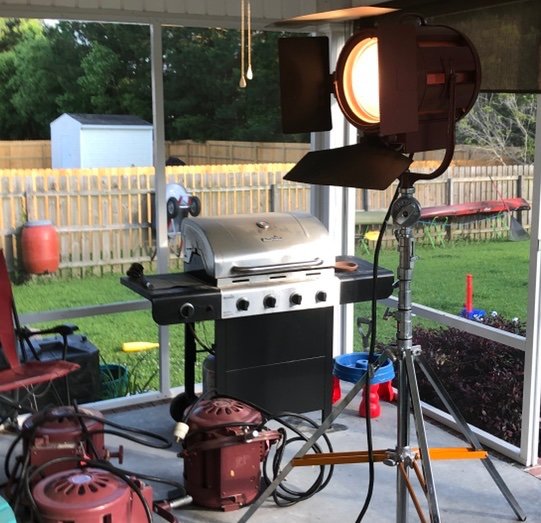
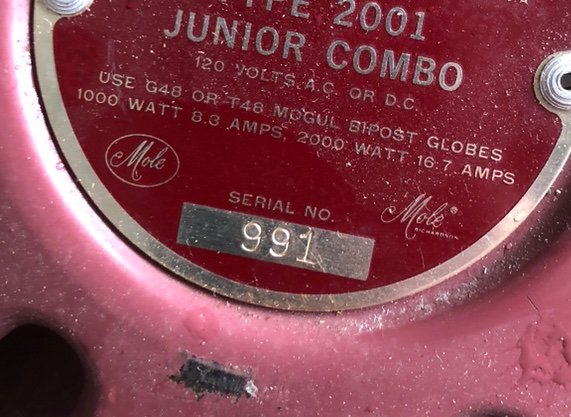
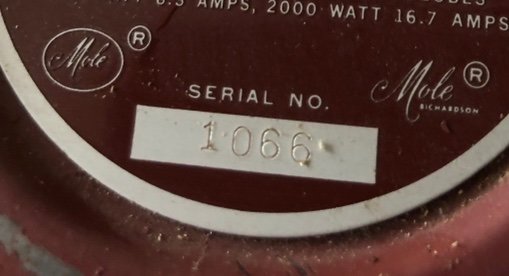
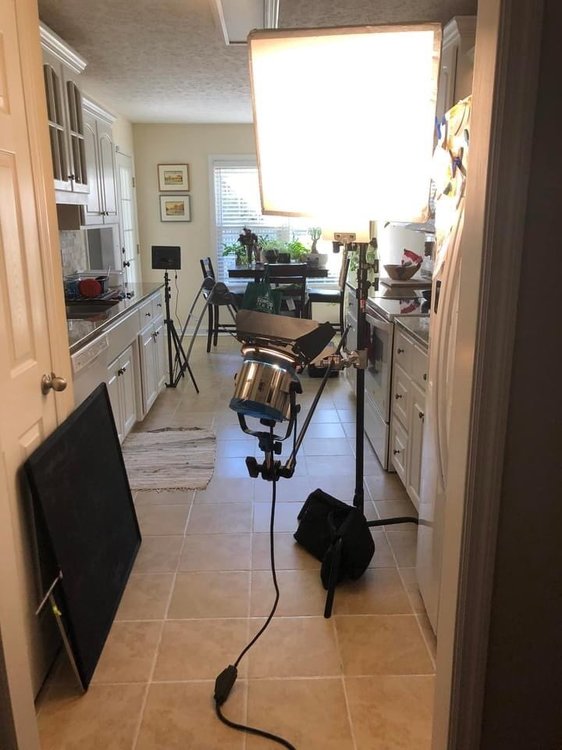
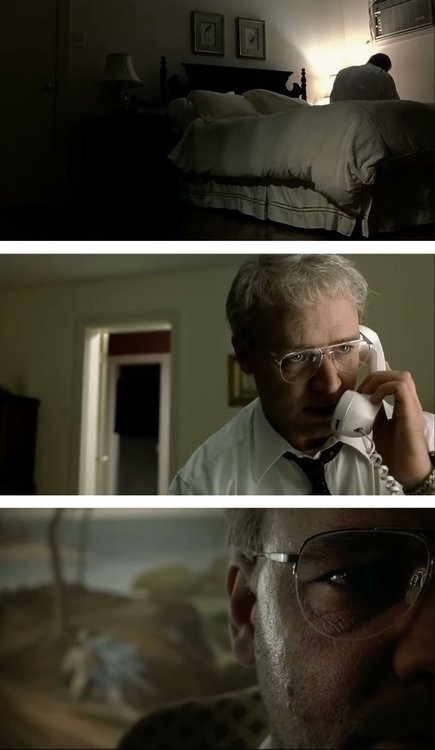
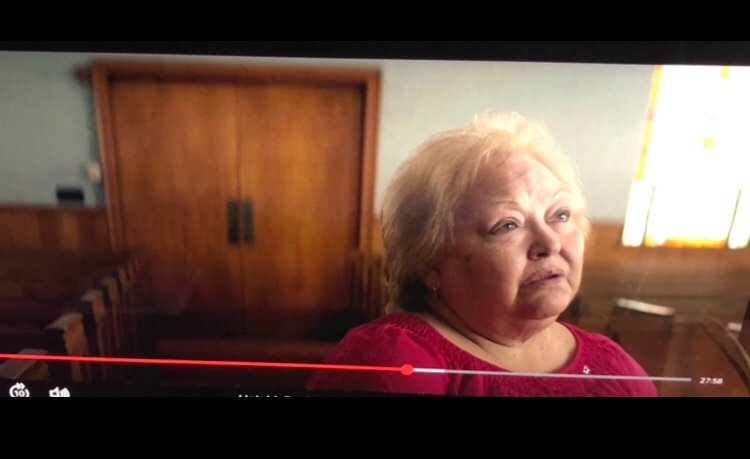
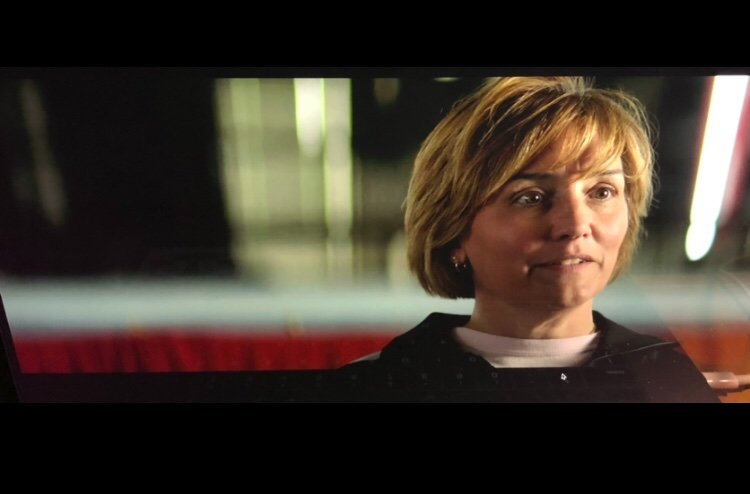
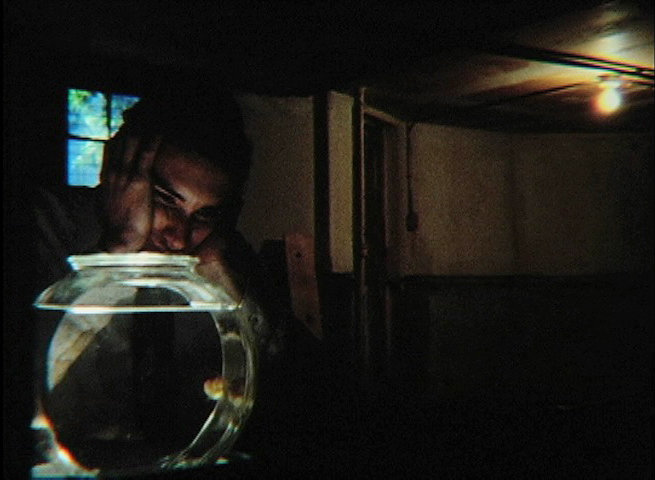
Mole Richardson lights
in Lighting for Film & Video
Posted
Thanks!
So since it’s kinda hard to nail down a particular time frame, these could have been made anytime in the 20th century? Do you think they made (or make these) in recent years?
I ask because I notice that the doors, on at least one of the lights, were in quite good shape. Like barely a scratch and the paint looked “newer”.
Any idea who, if anybody, would buy this type of fixture? I am just a small time dude. Usually smaller locations…low/no budget stuff. So I don’t necessarily see myself or somebody in my position lugging this thing into somebody’s kitchen like “excuse me while I whip this out.”
These things are big and clunky.